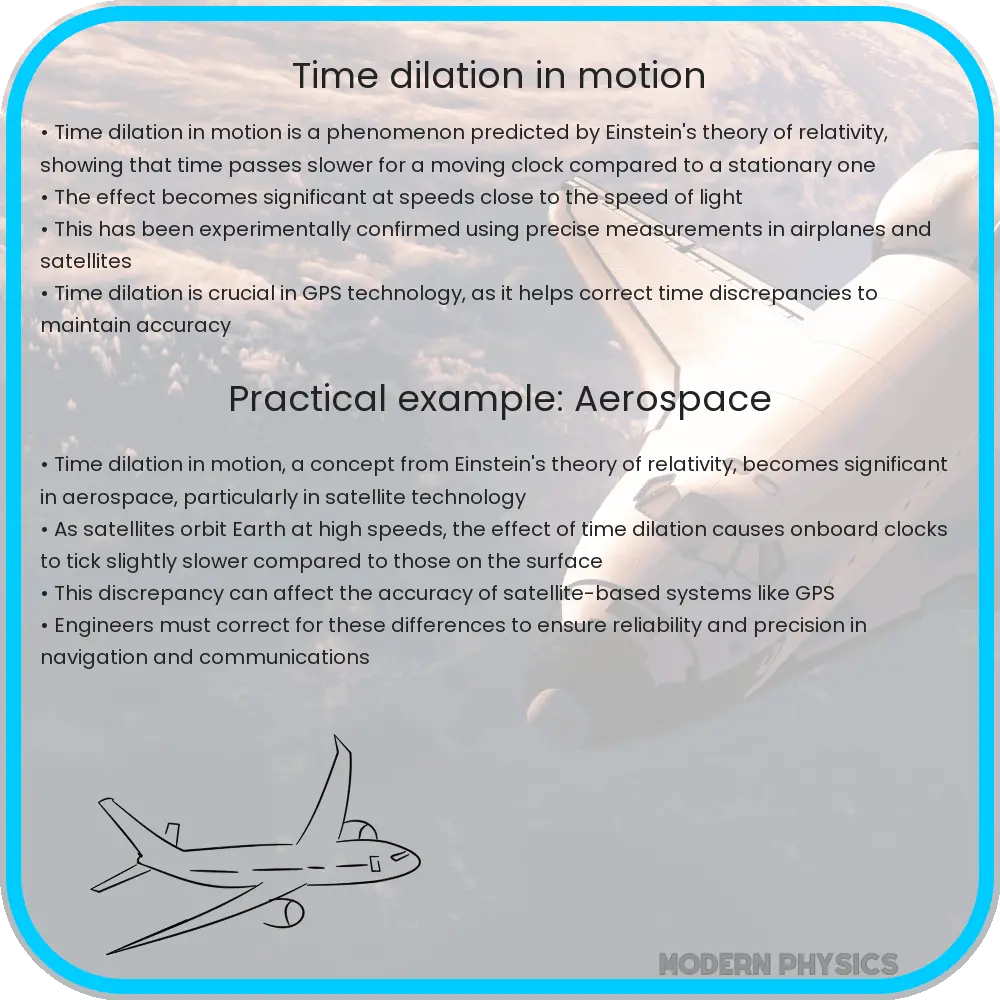Explore the mysteries of time dilation in motion, uncovering how speed and gravity from Einstein’s relativity theory alter time’s flow.

Understanding Time Dilation in Motion: Insights from Relativity
Time dilation, a fascinating concept from Einstein’s theory of relativity, reveals how time can pass at different rates under varying conditions. This phenomenon, deeply rooted in the realms of physics, becomes particularly pronounced at high speeds, close to the speed of light. In this article, we explore the intriguing interplay of relativity, speed, and the phenomenon of time dilation, shedding light on how motion can affect the passage of time.
Relativity and the Nature of Time
At the heart of understanding time dilation lies Einstein’s theory of relativity, which revolutionized our comprehension of time and space. Einstein proposed two forms of relativity: Special and General. Special Relativity, pertinent to time dilation in motion, focuses on the physics in the absence of gravity. It posits that the laws of physics are the same for all non-accelerating observers and that the speed of light in a vacuum is constant, regardless of the observer’s motion.
Speed and Its Effect on Time
One of the most startling outcomes of Special Relativity is that time is not absolute but relative. The rate at which time passes depends on the speed of the observer. As an object moves closer to the speed of light, time for that object slows down relative to a stationary observer. This effect is not noticeable at everyday speeds but becomes significant at velocities approaching the speed of light.
Experimental Evidence of Time Dilation
Time dilation is not just a theoretical concept but has been validated through numerous experiments. For instance, atomic clocks on satellites in orbit, moving relative to clocks on Earth, show measurable differences in time passage due to their speed. This effect, albeit minuscule, is critical for the accuracy of technologies like GPS.
The Twin Paradox: A Thought Experiment
A famous thought experiment that illustrates time dilation is the Twin Paradox. In this scenario, one twin travels on a spacecraft at near-light speeds while the other remains on Earth. Upon the spacefaring twin’s return, they would be younger than their Earth-bound sibling, a direct consequence of time dilation.
This concept, while perplexing, opens up a window into the profound implications of high-speed travel on the nature of time, presenting an intriguing aspect of modern physics.
Gravitational Time Dilation: Another Piece of the Puzzle
While speed significantly influences time dilation, gravity plays a crucial role as well. General Relativity, another aspect of Einstein’s theory, introduces gravitational time dilation. This phenomenon occurs because the presence of mass warps space-time. The stronger the gravitational pull, the slower time passes. This effect is observed near massive bodies like planets or stars, where time moves slower compared to regions of weaker gravity.
Practical Implications of Time Dilation
Time dilation is not just a theoretical curiosity but has practical implications in various fields. In satellite communication and GPS technology, the effects of both speed and gravitational time dilation are considered to maintain precision. Similarly, understanding time dilation is essential in planning long-duration space missions, especially those approaching relativistic speeds.
The Future of Time Dilation Studies
The study of time dilation continues to evolve, with researchers delving deeper into its implications for future technologies and our understanding of the universe. As we venture further into space and develop faster modes of travel, the effects of time dilation might become more pronounced in our daily lives, potentially leading to new discoveries in physics and cosmology.
Conclusion
Time dilation, a remarkable phenomenon emerging from the theory of relativity, fundamentally alters our understanding of time. It demonstrates that time is not a fixed entity but is malleable, influenced by speed and gravity. The implications of this concept stretch far beyond theoretical physics, influencing technology, space exploration, and our perception of the universe. As we continue to explore and experiment, time dilation stands as a testament to the extraordinary and sometimes counterintuitive nature of our reality. In comprehending this phenomenon, we not only delve into the depths of physics but also confront the profound mysteries of time and space, continuing our quest to understand the cosmos and our place within it.
Is this conversation helpful so far?
